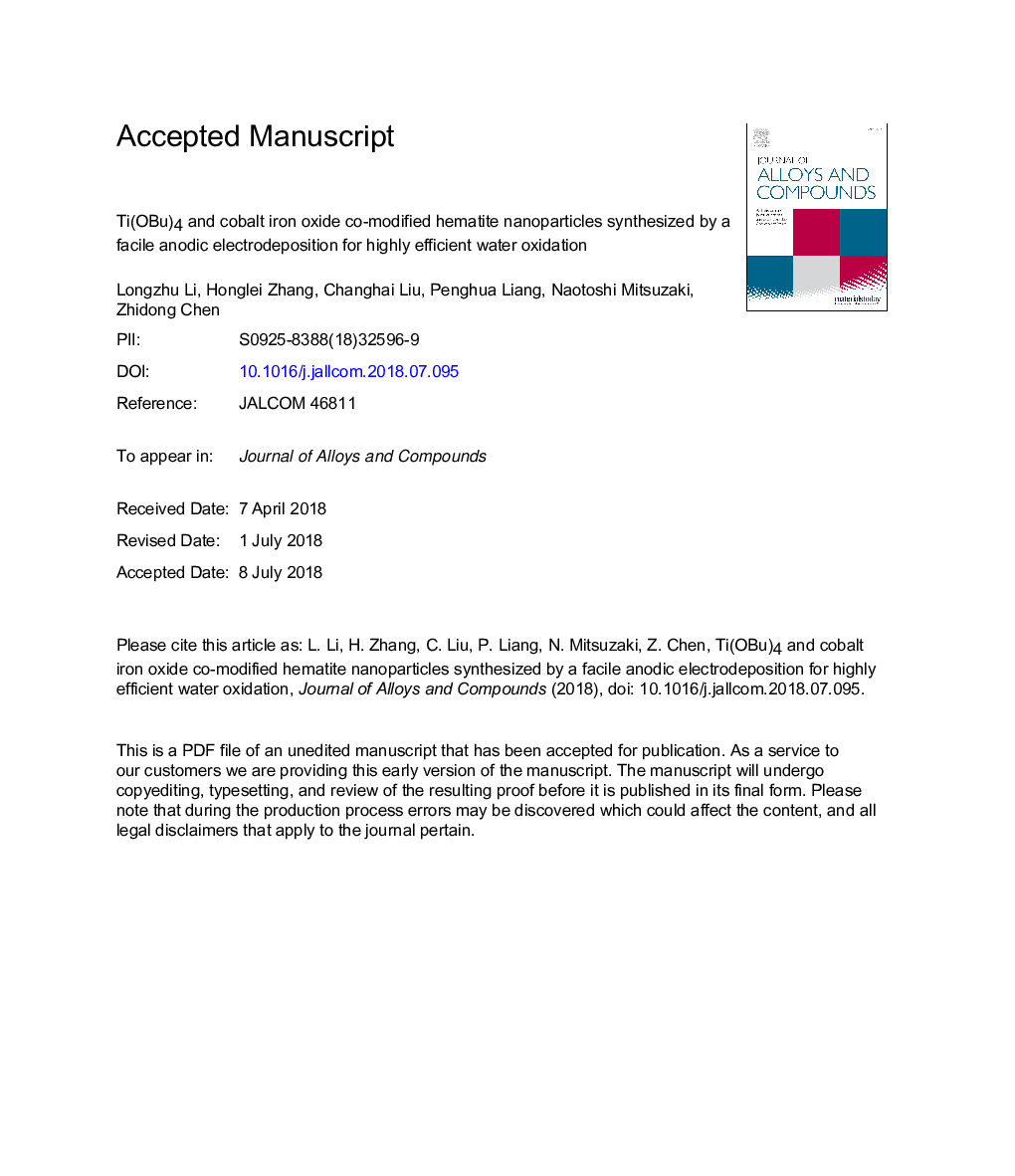| Article ID | Journal | Published Year | Pages | File Type |
|---|---|---|---|---|
| 7990153 | Journal of Alloys and Compounds | 2018 | 26 Pages |
Abstract
Based on the bare hematite prepared by a facile anodic electrodeposition, Ti(OBu)4 modified hematite through FeOOH film surface is a better method for obtaining more excellent photoelectrochemical performance. This is due to the significantly increased bulk charge separation efficiency caused by the refined grain, preferred orientation of (110) plane and higher donor density. Coupled with Cobalt Iron Oxide (CIO) nanoparticles, Ti(OBu)4 modified hematite photoanode has a 3 times enhanced photocurrent density of 1.02â¯mAâ¯cmâ2 and a negative shift of onset potential about 40â¯mV compared with bare hematite photoanode. In which, Ti(OBu)4 can increase the electron-hole separation and passivate the surface trap states simultaneously. The CIO nanoparticles coated on the surface of Ti/FeOOH sample not only act as a catalyst for promoting the surface hole injection for water oxidation, but also boost the charge separation with passivating the surface states. This work provides an indepth understanding of the effect of Ti(OBu)4 and CIO nanoparticles on morphology, crystalline structure and photoelectrochemical performance of anodic electrodeposited hematite photoanode via systematical characterization with scanning electron microscopy (SEM), transmission electron microscopy (TEM), UV-vis spectra, X-ray diffractometry (XRD), X-ray photoelectron spectra (XPS), and photoelectrical measurements.
Related Topics
Physical Sciences and Engineering
Materials Science
Metals and Alloys
Authors
Longzhu Li, Honglei Zhang, Changhai Liu, Penghua Liang, Naotoshi Mitsuzaki, Zhidong Chen,
